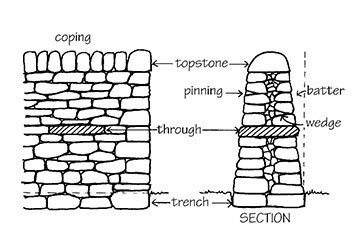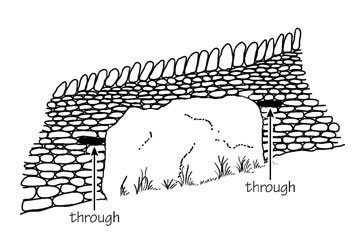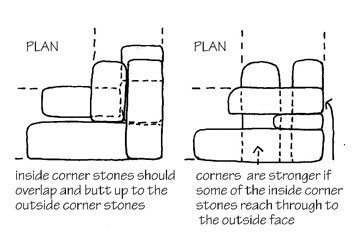Learn to build and repair dry stone walls
This handbook describes how to construct and repair dry stone walls, stone-faced earth banks, retaining walls and other dry stone features. It is intended to be used by conservation volunteers and others interested in learning the skills of dry stone walling. It contains everything you need to know about dry stone walling – the history of walls in the countryside, how to build or restore a dry stone wall, as well as their conservation value. Loads of information about dry stone wall styles and features across the UK and Ireland, and much more. Building with dry stone is one of the earliest skills developed by people, used for building shelters, fortifications, burial mounds, ceremonial structures and animal enclosures. Dry stone walling is so durable because it contains no mortar to crack and fail, but is held together merely by the weight of stone, and by the skill of the builder who selected and fitted the stones together.
What to expect
Dry stone walling subjects
Background info
Loads of background information – dry stone wall history, conservation, dating, the law, flora and fauna, safety, tools and equipment.
Building a wall
Clear, step-by-step instructions on all aspects of building a dry stone wall – stone selection, walling procedure, building on slopes, and much more.
Features & furniture
Design and construction of wall furniture and features such as smoots, stiles and gates, cairns, pillars, arches, steps, seats and so on.
Dry Stone Walling: a practical handbook – chapters
The original, printed TCV handbook “Dry Stone Walling, a practical handbook” contained 160 pages. Every one of these pages is included in these digital versions.
What is in the handbooks?
Step by step
All the processes in the handbooks are explained in easy to follow language, using step-by-step guides that are ideal for all levels.
Clearly Illustrated
Over 2,000 helpful illustrations accompany the text, adding clarity.
Comprehensive
The handbooks cover all the topics you need to improve your skills and knowledge.
Definitive
Written by conservation experts, the handbooks are highly valued by users across the conservation sector.




